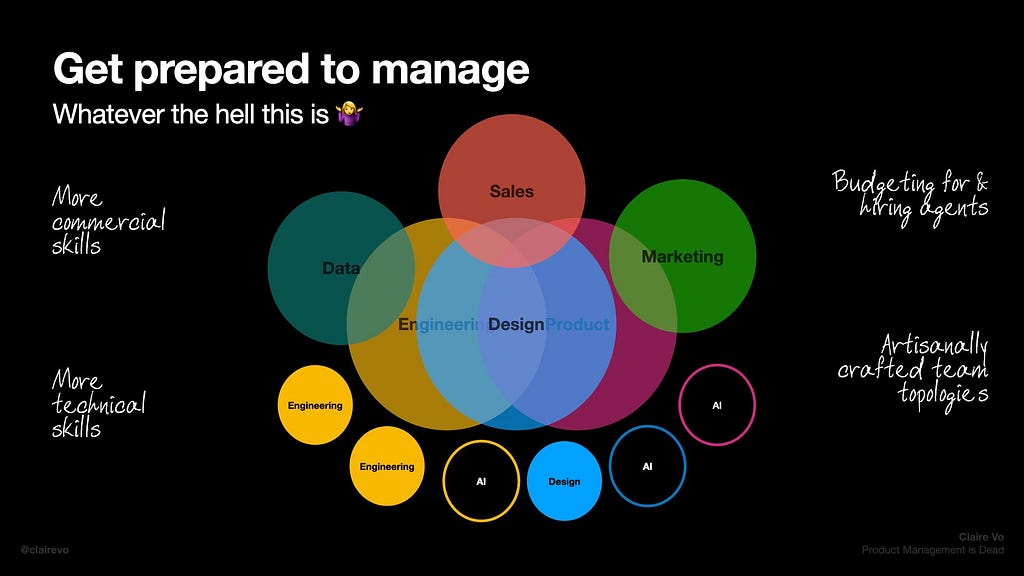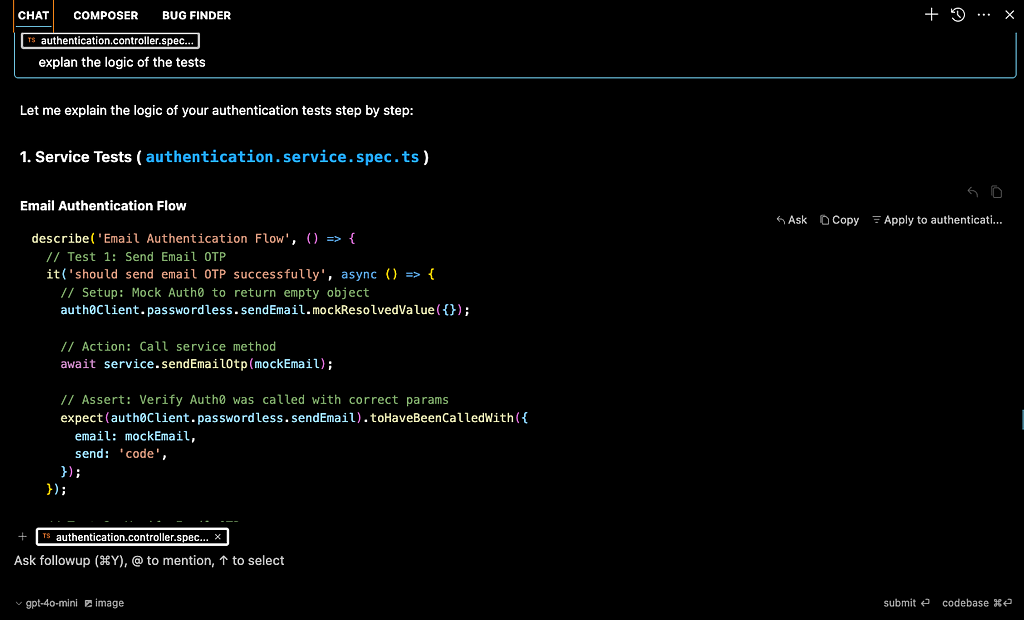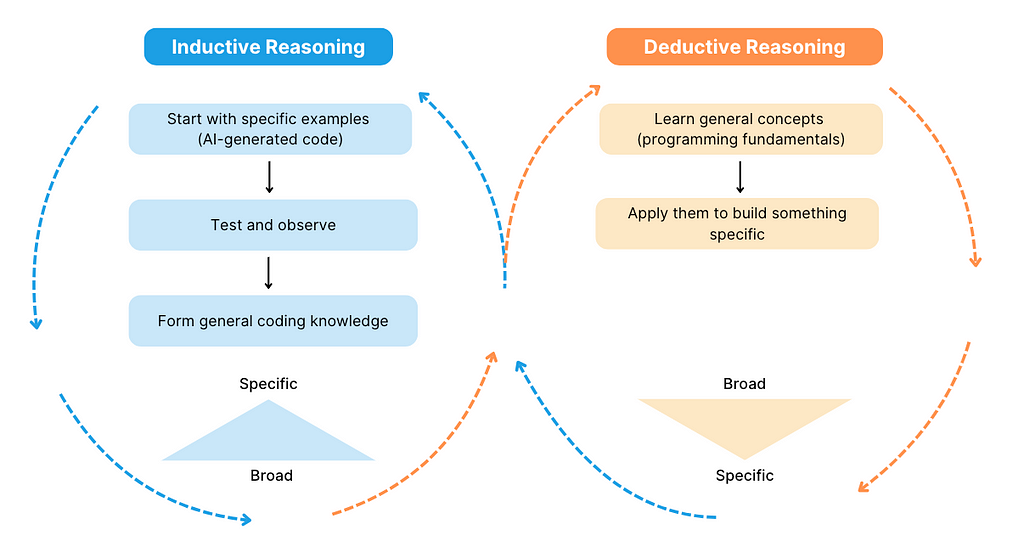This content originally appeared on Level Up Coding - Medium and was authored by Jian Ruan
“AI will collapse the talent stack,” declared Claire Vo, Chief Product Officer at LaunchDarkly and creator of ChatPRD [1]. This bold statement captures a profound shift that is reshaping the modern workforce. Roles once seen as distinct — product management, engineering, and design — are starting to merge into unified, multifaceted responsibilities, driven by advancements in AI and automation.
I see this happening firsthand in my own startup. As a CTO, my role has naturally evolved into what I now think of as CPTO (Chief Product & Technology Officer), navigating both the strategic vision of what to build and the technical execution of how to build it.

The Controversy Around “Collapsed” Roles
This “collapse” of roles has sparked debates in online forums like Reddit [3]. Critics argue that tools like ChatPRD, which automate product management tasks, strip away the human touch and undervalue the depth of expertise required for specialized roles. Others see the idea of one person mastering PM, engineering, and design as overly idealistic — especially in traditional corporate environments, where specialization is often the norm.
These criticisms aren’t without merit. In structured, hierarchical organizations, specialization is key to operational efficiency. However, in startups, where agility and adaptability are critical, this consolidation of the talent stack is already happening. As markets evolve, individuals with these “collapsed” skill sets — those who can adapt and excel across multiple disciplines — are becoming some of the most valuable contributors, not just in startups but also in larger organizations striving to stay competitive.
Andrew Ng touches on this evolving dynamic in a recent post, highlighting how advancements in AI are reshaping software development. As coding and prototyping become faster and more efficient, there’s a growing demand for roles focused on defining what to build — like product management and design [4]. In many cases, engineers are stepping into these responsibilities, reflecting the shifting composition of development teams. This transition is often more achievable for technical engineers adding PM skills than for PMs acquiring deep technical expertise. While tools like Cursor and Bolt simplify prototyping, deploying production-ready solutions still requires comprehensive technical knowledge, from understanding data pipelines to managing scalable architectures.
Why “Collapsed” Skill Sets Are Attainable — Through Inductive Reasoning
Critics often question whether mastering PM, engineering, and design is realistic. I believe it is — and the key lies in the growing use of inductive reasoning in learning and problem-solving.
Many times, when I had no clear idea how to implement a desired functionality, I just asked AI to generate the code for me. At first, I didn’t understand the code, but by asking the AI to explain its logic and refining it through experimentation, I gradually developed a deeper understanding. This process mirrors inductive reasoning: starting with an answer and working backward to uncover the “why.” It reminds me of my school days when I’d get stuck on a math problem; I would often look up the answer first and then work backward to understand how it was solved — a much more efficient way of learning than struggling to solve it entirely on my own.

Inductive vs. Deductive Learning
Inductive Reasoning: Start with a specific result and work backward to understand the broader principles.
- Example: Use AI to generate functional code for a task. Analyze the generated code, understand its structure, and infer the underlying concepts or patterns, such as how loops or API calls are handled.
Deductive Reasoning: Start with general principles and apply them to derive specific solutions.
- Example: Study coding fundamentals, such as data structures and algorithms, then use that knowledge to write code for specific tasks.
The key difference lies in the approach:
- Deductive reasoning is like the structured learning in university computer science programs, where students master theory first before applying it to real-world problems.
- Inductive reasoning, on the other hand, is often the method of self-taught developers, who begin by building projects, learning patterns through experimentation, and refining their understanding as they go.
Both approaches have their place, but the rise of AI tools has made inductive reasoning a more accessible and efficient pathway for learning to code and delivering real-world results quickly.
CICD Between Inductive and Deductive Reasoning in the AI Era
It’s important to recognize that inductive and deductive reasoning are not mutually exclusive — they complement each other in the learning and problem-solving process.
During Inductive Learning:
Start with Specific Observations
- AI generates code for you, and you observe its behavior or outcome (e.g., whether it runs successfully or makes logical sense).
- You then generalize your understanding based on these specific examples.
Form Broader Understanding
- By asking the AI to explain the code it generated and verifying its logic, you build a conceptual framework about how the code works.
- For instance, after seeing a few examples of code that manipulate APIs, you might infer general patterns about how APIs are handled in programming.
During Deductive Learning:
Apply Learned Concepts
- Once you understand the AI’s explanations or patterns in the code, you apply this general knowledge to evaluate or modify other pieces of code.
- For instance, after learning about loops or conditionals in one example, you can use that understanding to analyze new code generated by the AI.

How LLMs Leverage Inductive Reasoning
LLMs primarily function through inductive reasoning. They generate outputs based on patterns and examples in their training data, rather than applying pre-defined logical frameworks. As humans interact with these tools, we, too, can adopt more inductive approaches: experimenting with generated results, learning from them, and gradually building expertise.
This process parallels scientific exploration. A compelling example is the Nobel Prize-winning work of Demis Hassabis and his team at DeepMind, which revolutionized protein structure prediction [5]. Traditionally, deductive reasoning — working from established theories — could only take research so far. Their breakthrough came from an inductive approach: generating potential protein structures using AI, then reasoning backward to explain their functionality. This process exemplifies how inductive reasoning can drive innovation, uncovering new insights that would have been difficult to achieve through deduction alone.
Similarly, leveraging inductive reasoning in AI allows us to move faster, iterate more freely, and learn through experimentation. Whether it’s building software, designing workflows, or tackling complex challenges, this approach empowers us to explore possibilities first and refine our understanding later. By embracing this mindset, we can harness the full potential of AI to accelerate discovery and innovation across disciplines.
Applying Inductive Reasoning Beyond Product Building
This approach isn’t limited to product building. Startups are increasingly leveraging “collapsed” roles across other functions, such as marketing and HR. As discussed in the YC Lightcone podcast [6], companies are using engineers to automate tasks traditionally handled by specialized teams. For example, rather than hiring a Chief Marketing Officer to build a marketing team, some startups rely on engineers to manage user acquisition pipelines, optimize paid advertising, and analyze campaign performance — all through data-driven, automated systems.
This trend isn’t just about cutting costs; it’s about fundamentally rethinking how we solve problems. By leveraging versatile individuals and AI tools, companies can approach challenges across domains with unprecedented efficiency. As the lines between roles continue to blur, adaptability will be the defining skill of the future workforce.
Reference
[1] Lenny & Friends Summit 2024, Product Management Is Dead, So What Are We Doing Instead? https://www.youtube.com/watch?v=93fCvFkY1Lg
[2] Claire Vo, Product Management Is Dead, https://www.chatprd.ai/blog/product-management-is-dead
[3] Reddit, AI Is Adding to the Stress of Being a PM…, https://www.reddit.com/r/ProductManagement/comments/1i50tx7/ai_is_adding_to_the_stress_of_being_a_pm/
[4] Andrew Ng Newsletter, Jan 15, 2025 | Deeplearning AI, https://www.deeplearning.ai/the-batch/issue-284/
[5] Nobel Prize Organization, Nobel Prize in Chemistry 2024: Demis Hassabis and John Jumper | Press Release, https://www.nobelprize.org/prizes/chemistry/2024/press-release/#:~:text=Demis%20Hassabis%20and%20John%20Jumper,amazing%20capacity%20as%20chemical%20tools
[6] YCombinator, Vertical AI Agents Could Be 10X Bigger Than SaaS, https://www.youtube.com/watch?v=ASABxNenD_U&list=PLQ-uHSnFig5Ob4XXhgSK26Smb4oRhzFmK&index=4
The “Collapsing” Talent Stack was originally published in Level Up Coding on Medium, where people are continuing the conversation by highlighting and responding to this story.
This content originally appeared on Level Up Coding - Medium and was authored by Jian Ruan
Jian Ruan | Sciencx (2025-01-21T21:07:58+00:00) The “Collapsing” Talent Stack. Retrieved from https://www.scien.cx/2025/01/21/the-collapsing-talent-stack/
Please log in to upload a file.
There are no updates yet.
Click the Upload button above to add an update.
